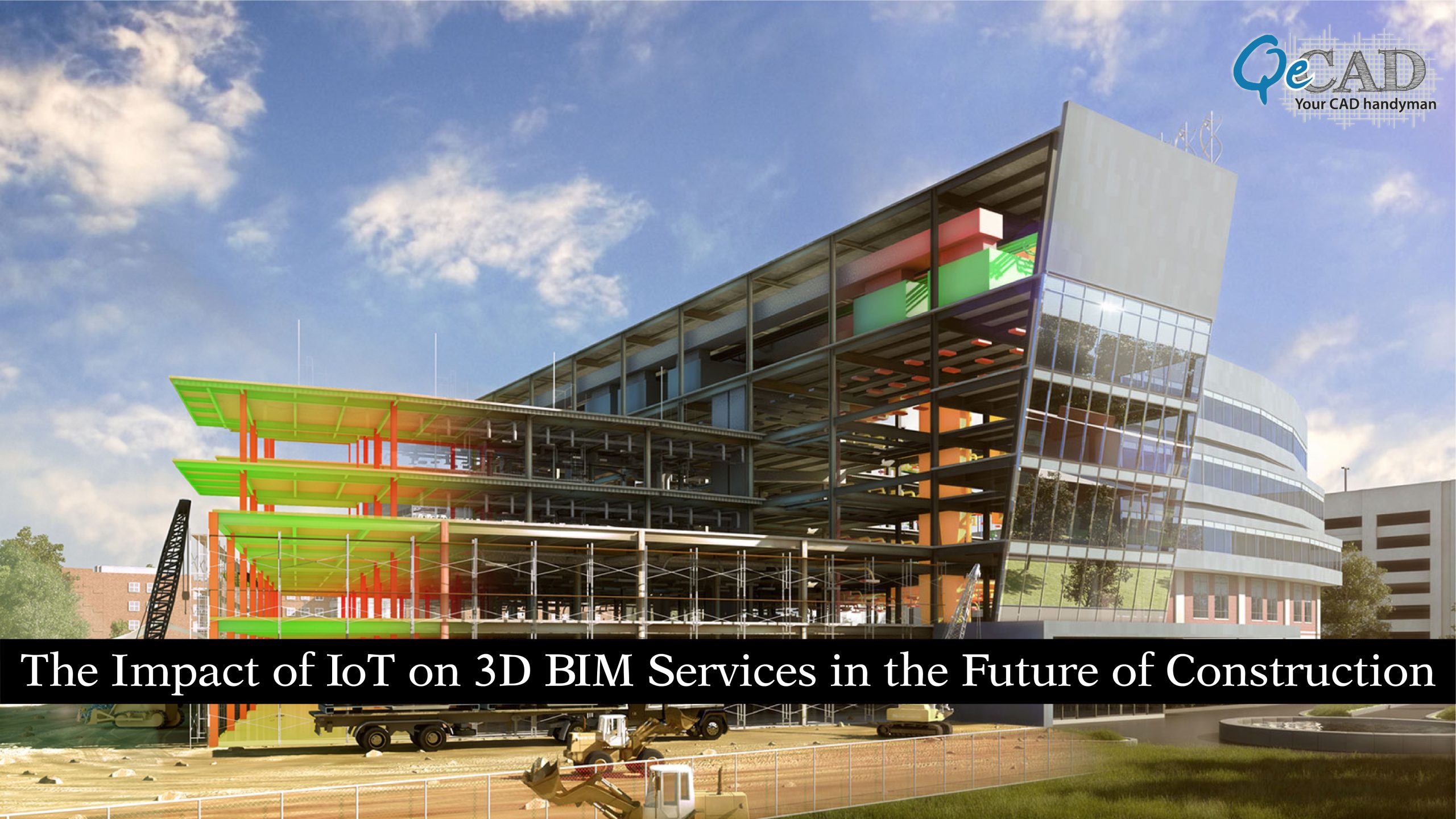
Introduction
Since the introduction of cutting-edge innovations like Building Information Modeling (BIM) as well as the Internet of Things (IoT), a few years ago, the construction sector experienced substantial alterations. By enhancing profitability, effectiveness, and security, both of these developments possess the possibility to completely transform the building sector. In this blog, we’re going to examine how the building sector may evolve as a result of IoT and BIM unification.
What is BIM?
A 3D digital representation of a construction is produced as part of the Building Information Modelling Services (BIM Services) procedure. Details on the planning, building, and upkeep of the structure are included within this digital system. By fostering improved cooperation among stakeholders, cooperation, and interpersonal interaction, BIM helps the construction procedure run more smoothly.
What is IoT?
The network of actual objects—such as machinery, cars, structures, and other things—that have software, detectors, and communication built in is known as the Internet of Things (IoT). Over internet connections, IoT gadgets may interact with one another along with different systems as well. IoT technology has been employed to enhance mechanization and effectiveness across numerous procedures.
How are BIM as well as IoT compatible?
Construction processes may be made easier and more productive by combining BIM as well as IoT. Continuous surveillance of building locations, machinery, and resources is possible with the combination of IoT and BIM. This might raise profitability, decrease waste, and enhance protection.
IoT and BIM integration in the building sector has the following advantages:
- Increased Security:
By allowing continuous surveillance of personnel, machinery, and supplies, the combined application of IoT and BIM can increase protection on building premises. IoT sensors may recognize possible risks and instantly notify employees, lowering the possibility of catastrophes. The BIM model, which could be utilized to spot possible security risks prior to they happen, may incorporate this data. On the construction location, fatalities would be less frequent as a result.
For example, sensors may be added to laborers’ hard helmets to track their well-being and security. The BIM model may utilize such information to spot employees who have a threat of becoming dehydrated or exhausted. It helps guarantee worker safety on the building site and assists in preventing catastrophes. - Productivity gains:
Real-time monitoring of building construction progress is possible with IoT sensors. Rapidly identifying bottlenecks and ineffectiveness, might assist construction teams in taking the appropriate measures needed. Additionally, BIM may be utilized to enhance collaboration among teams in the building industry, cutting down on rework efforts.
To track the process of curing, for example, sensors may be placed in the slabs of concrete. The BIM model, which may be employed to pinpoint the precise moment the slab may be transported, might include such information. This will guarantee that the construction job finishes on schedule and contribute to avoiding any postponements in the building process. - Cost Savings:
By increasing productivity while decreasing waste, the combined use of IoT and BIM may decrease expenses in the building sector. Construction locations, machinery, and resources may be monitored in actual time in order to find places in which expenses may be lowered. The requirement for fresh supplies may be decreased by using BIM to locate places in which resources are recyclable. - Increased Collaboration:
Collaboration has been enhanced thanks to BIM, allowing for greater collaboration, interaction, and cooperation between all parties involved with the construction procedure. By allowing real-time evaluation as well as communication between stakeholders, IoT may be employed to strengthen collaboration. - Sustainable Construction:
IoT and BIM integration may additionally encourage the promotion of sustainable building techniques. Buildings may adopt energy-efficient as well as environmentally friendly construction techniques by using IoT sensors in order to keep track of energy consumption and the surrounding environment. - Enhancing Quality Control:
Additionally, the building process’ quality control may be enhanced by incorporating the use of IoT and BIM. The functionality of building components may be checked using internet of things (IoT) gadgets. This information may be incorporated into the BIM model, which may be utilized to make confident the components are compliant with the specifications.
Conclusion
The construction business could change as a result of IoT and BIM incorporation. IoT makes it possible to watch construction zones, machinery, and resources in real-time, which may assist to raise efficiency, minimize expenses, and support environmentally friendly building methods. Additionally, BIM may be employed to enhance collaboration among stakeholders, cooperation, and interaction during the process of building. The building sector may become more productive, cost-effective, and sustainable with the incorporation of IoT as well as BIM.
